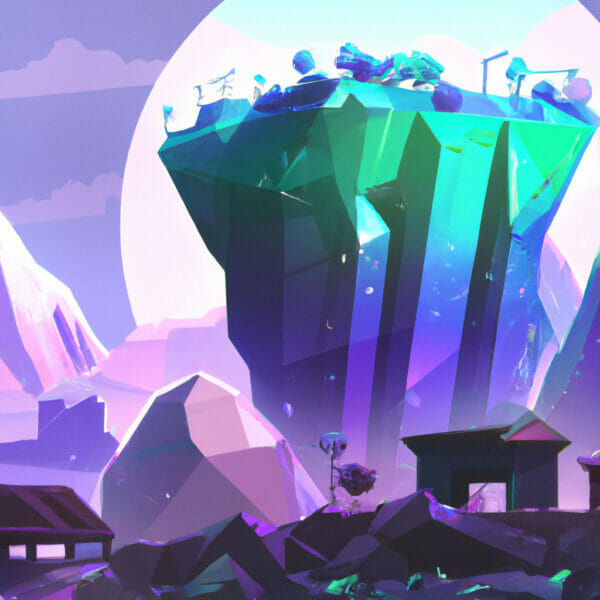Virtual reality (VR) has been a hot topic in recent years, with exciting capabilities both for entertainment and professional uses. As VR technology continues to develop and find new uses, more and more people are interested in learning how to make their own VR apps.
In this article, we’ll provide you with a comprehensive list of resources to help you on your VR app development journey. One highly recommended starting point is the Zenva VR Mini-Degree, a beginner-friendly option for diving into the world of VR development.
Table of contents
How Does Virtual Reality Work
Virtual Reality (VR) is a cutting-edge technology that immerses users into a digitally created environment, simulating a first person experience. By using specially designed hardware and software, VR tricks the brain into perceiving the digital environment as real. Typically, VR systems employ headsets with built-in screens and sensors that track head movement, allowing users to look around in the virtual world. Some systems also include handheld controllers for interactive experiences and body tracking for a more immersive experience.
How Does VR Benefit Apps
Integrating VR into apps can provide numerous benefits, such as:
- Increased engagement: Users can interact with the app in a more natural and intuitive way, increasing user satisfaction and retaining their attention for longer periods.
- New possibilities: VR opens up a whole new world of creative possibilities for app developers, allowing them to create immersive experiences that were previously impossible or difficult to achieve.
- Enhanced learning: Educational apps in VR can create more effective and engaging learning solutions by simulating real-life situations and providing hands-on experiences.
- Emotional connections: With its ability to create realistically immersive environments, VR can evoke strong emotions and establish deeper connections with app users.
- Greater accessibility: VR can make certain experiences more accessible to users with physical or geographical limitations, bringing them closer to places and experiences they might not be able to enjoy otherwise.
Why is Learning VR Important for App Developers
As the demand for VR applications continues to grow, app developers who possess VR development skills will have a significant advantage in the job market. VR development expertise can lead to exciting and rewarding career opportunities in various industries, such as gaming, education, healthcare, military, tourism, and more. With the VR market expected to grow exponentially in the coming years, learning VR is a smart investment for app developers looking to stay ahead of the curve.
Popular Apps Made with VR
Here are some popular apps that have leveraged VR technology to provide unique and engaging user experiences:
- Google Earth VR: Explore the planet in stunning detail with this highly immersive virtual reality app.
- Beat Saber: This rhythm game challenges players to slice incoming blocks in time with music using virtual lightsabers.
- Superhot VR: A unique action puzzle game where time only moves when the player moves, requiring careful strategy and quick reflexes.
- Job Simulator: Experience the absurdity of the working world in this hilarious VR game that simulates various job-related tasks and scenarios.
- The Climb: Feel the adrenaline rush as you virtually scale breathtaking cliffs in this visually stunning climbing simulation.
Best Tools for Making VR Apps
Developing VR apps requires specialized tools and software. Among the most popular choices for creating VR experiences are:
- Unity: A widely-used game engine and development platform, Unity offers built-in support for various VR platforms and a wide range of powerful tools to streamline VR app development.
- Unreal Engine: This highly-regarded game engine features robust VR functionality and an advanced, user-friendly visual scripting system.
- A-Frame: A web-based framework for building VR experiences, A-Frame makes creating VR apps accessible even for those with limited coding knowledge.
- Oculus SDK: A comprehensive development kit tailored specifically for building apps on the Oculus platform, designed to work with Unity and Unreal Engine.
- Google VR SDK: This SDK by Google offers tools for building VR apps on Android, targeting devices such as the Google Cardboard and Daydream platforms.
Below, we have compiled a list of the best resources from Zenva and other sources to help you learn how to make a VR app, whether you’re a beginner, intermediate, or advanced developer.
Zenva VR Mini-Degree
Zenva Academy’s Virtual Reality Mini-Degree is a collection of 10 courses designed to help you build your own VR games and apps with Unity. Covering Unity basics, VR fundamentals, VR controllers, avatars, and more, these courses are suitable for beginners and experienced developers alike.
The flexible, project-based courses allow you to develop a professional portfolio while learning at your own pace.
Oculus Unity Tutorial
This Oculus developer guide offers a beginner-friendly walkthrough on building a VR app using the Oculus platform with Unity and the Oculus SDK. The guide covers software and hardware requirements, steps to create a basic app, and tips for optimizing performance and user experience.
Create with VR – Unity Course
Unity’s “Create with VR” course helps individuals design and develop their own VR applications, guiding them through creating a unique project from start to finish. This course is great for those interested in creating interactive walkthroughs, product configurators, and more.
Step-by-Step Guide: Making a VR App
This NineHertz blog post offers a step-by-step guide on VR app development, covering everything from defining goals to selecting the right game engine, frameworks, libraries, design and prototyping tools, and hardware. It also discusses the advantages and costs of building a VR app.
How to Code a VR Game
This GameDev Academy article is a beginner’s guide to coding a VR game, explaining the differences between stationary and room-scale VR experiences. It recommends Unity and Unreal Engine as the best tools for VR development and provides best practices, free courses, and tutorials to help you get started.
Making a VR App with Zero Experience
This Hackernoon article dives into creating a VR app with no previous experience, recommending Unity3D and the Google VR SDK. It advises starting with a simple project, testing on different devices, and seeking online resources like tutorials and forums for further learning.
Building a Multiplayer VR Web App
This FreeCodeCamp article teaches how to build a multiplayer VR web app using WebVR, A-Frame, and Ably Realtime. Learn how to create a holographic 3D avatar that users control and move with their phones in real-time.
VR Interface Design Process
This InVision article focuses on designing user interfaces for VR apps, explaining how to set up the canvas size, test, and use tools like Sketch, GoPro VR Player, and Oculus Rift. The article also includes a short tutorial on VR UI design.
Vilmate – How to Make a VR App
This Vilmate blog post explores the growing popularity of VR and its potential for businesses. It covers technical requirements, platforms, software development kits, game engines, and design and prototype tools. A great resource for anyone interested in VR app development and content creation.
Conclusion
As you embark on your journey to create your own VR app, these resources should provide a solid foundation and guidance. Don’t forget to consider enrolling in the Zenva VR Mini-Degree as a comprehensive, beginner-friendly starting point.
Good luck, and have fun exploring the exciting realm of VR app development!
Did you come across any errors in this tutorial? Please let us know by completing this form and we’ll look into it!

FINAL DAYS: Unlock coding courses in Unity, Godot, Unreal, Python and more.







